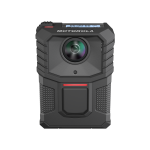In today’s rapidly evolving world, where technology continuously shapes our daily lives, innovative solutions are constantly being sought to address challenges faced by various industries. One such advancement that has garnered significant attention is body-worn cameras (BWCs). Originally introduced to law enforcement agencies, body-worn cameras are now making their way into numerous other professions. More and more industries, such as hospitality, education, and customer service, are utilizing BWCs due to their invaluable benefits in enhancing accountability and safety.
- Enhancing Transparency and Accountability
Body-worn cameras are transforming accountability in professions that require face-to-face interactions with the public. Law enforcement officers, security personnel, and healthcare providers are just a few examples of those who can benefit from wearing BWCs. By capturing unbiased and real-time footage, these cameras provide a detailed account of events, discouraging misconduct and encouraging responsible behavior. The footage can serve as a critical source of evidence, enabling better investigations and ensuring justice is served.
- Strengthening Trust and Public Perception
When individuals see professionals equipped with body-worn cameras, it fosters a sense of transparency and trust. This is especially true in law enforcement, where public trust is paramount. By demonstrating a commitment to accountability and the welfare of the community, law enforcement agencies can bridge the gap between officers and citizens. BWCs can significantly improve the public’s perception of law enforcement, leading to a more harmonious and safer society.
- Professional Development and Training
Body-worn cameras provide an excellent tool for professional development and training purposes. The recorded footage can be used to identify areas where employees excel or require further training. Reviewing real-life scenarios allows for better learning opportunities, improving the overall efficiency and effectiveness of the workforce. By learning from past experiences, professionals can better adapt and respond to future challenges.
- De-escalation and Conflict Resolution
For professions dealing with potential conflict situations, body-worn cameras serve as an essential de-escalation tool. Knowing that their actions are being recorded, both parties are more likely to act responsibly and calmly, leading to fewer violent encounters. Additionally, when disputes arise, reviewing the recorded footage can help resolve conflicts more accurately and impartially.
- Safer Work Environments
Body-worn cameras not only protect the public but also those wearing them. In high-risk professions, such as security or law enforcement, BWCs act as a deterrent for aggression towards personnel. The knowledge that evidence is being collected can reduce the likelihood of assaults on professionals, promoting safer work environments.
- Evidence Collection and Investigations
In the legal system, the admissibility of evidence is of utmost importance. Body-worn cameras offer a reliable and unbiased source of evidence that can strengthen cases in court. This is not limited to law enforcement; industries such as private security, healthcare, and transportation can also benefit from recorded footage to resolve disputes or address incidents effectively.
- Improving Emergency Response
In emergency services like firefighting and emergency medical response, time is of the essence. Body-worn cameras can capture critical moments and provide valuable insights for post-incident analysis. With safety and communications software such as Orchestrate, body worn cameras can be integrated to work hand-in-hand with other emergency response equipment, saving precious seconds in time-sensitive situations. By identifying areas of improvement, emergency responders can enhance their strategies and potentially save more lives.




